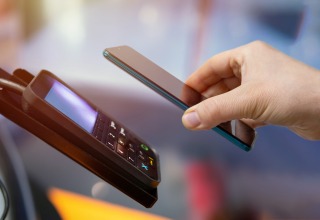Consumers have become increasingly dependent on their mobile devices to complete basic tasks, from booking appointments to paying bills via online banking. Annual app revenue has reached $111 billion and is expected to grow exponentially over the next few years.
To make a true impact with an app, founders work with developers, designers, and marketers to build an effective app to help simplify a user’s daily routine. In this article, we discuss what goes into creating the apps people rely on everyday.
The Idea
Every app started with an idea, but successful apps were created by putting ideas into action. Developers look at problems consumers face and figure out how to solve them. This might seem like a fairly easy and straightforward task, but it’s actually an extensive series of steps. Developers brainstorm ideas by asking questions about the target audience and consumer behavior through in-depth market research.
There is a good chance that a similar app is available to consumers, which is why after establishing their demographic, developers take a deep dive into the competition. The key to a successful competitive analysis is to consider who is using a competitors’ app and how positive or negative their ratings of it are. Developers also focus on reviewing the company’s history to see if the marketing has changed over time and how companies have tackled challenges along the way. Taking the time to examine each aspect of a competitors’ app and understanding what gaps need to be filled is crucial for creating a successful and effective app.
MVP
MVP stands for minimum viable product. It is set up by creating a roadmap to help developers understand where they currently are with the development process and what steps need to be taken to ensure the app becomes successful. Some best practices founders’ use for creating MVPs is writing out goals on a whiteboard then prioritizing them accordingly. They ask questions about the app’s primary functionality and which features should be included to attract users.
After the MVP has been developed, marketers ask users for feedback so they can figure out how to improve the product and increase their revenue.
Monetization
When the app has been built, it’s time to start monetizing. Developers work closely with marketers to figure out how to do this. They consider options like including in-app purchases or subscription payments. They could also include ads or sell user data to turn a profit. The key to determining how to set pricing is to research what other similar apps on the market are charging and checking reviews to see if customers are happy with those prices.
Founders don’t always immediately monetize their apps. Although it’s acceptable to take this route, it’s advisable to take the time to determine when is the right time to start charging for the app. Skipping this step often leads to a loss of profits, especially for startups.
User-experience Design vs. User-interface Design
The terms “user-experience” (UX) and “user-interface” (UI) are sometimes used interchangeably, according to Wix. However, they have two very different functions. UX focuses on how a user responds to the product whereas UI is about aesthetic elements. UX designers use a number of different tools to ensure their app provides a seamless experience for users, as follows:
1. Information Architecture
IA is when the development team decides how the data and functionality of an app is organized, says Forbes. It usually starts by making a list of features the app needs and then ranking them according to priority.
2. Wireframe
This step involves using the IA to assign different functions and data to different screens. Initially, developers sometimes use wireframe software or even paper to avoid costly mistakes.
3. Workflows
Workflows represent a user’s journey on your app. To ensure a positive user experience, developers look at elements like how many clicks are needed to complete an action or how accessible specific features are. If too many clicks are required to perform a task, then it’s a clear sign that the wireframes need to be tweaked.
While UI, on the other hand, uses a completely different set of tools to design a visually appealing interface, reported by Digital Authority Partners.
1. Style Guides
Think of style guides as the foundation of an app’s design. UI designers use them to make sure the colors and graphics align. For example, the font can be blue on one screen and red on another; this makes the app look unprofessional and gives users a negative experience.
2. Revised Designs
At this stage, designers replace the wireframe designs with elements from the style guide. The designs are still flexible at this stage so they can easily be changed if the designer wants to go for a different look.
3. Testing
When the style guide has been fully implemented, designers test the app’s click through models and other functions to identify where improvements might be needed.
Marketing
Now that the app is ready to be launched, marketers need to figure out how to reach their target audience. Often, many challenges come along with marketing an app. Financing is frequently one of the main roadblocks. Marketing is expensive, no matter which route an app’s founders choose to go. They might want to try digital marketing but also invest a little in traditional print marketing. In the digital age, app founders have endless options to market their product, according to one San Diego mobile app company. Social media marketing, PPC ads, and display advertising are just three of the many avenues companies can take to put their product on the map.
Last Updated: February 9, 2022




















